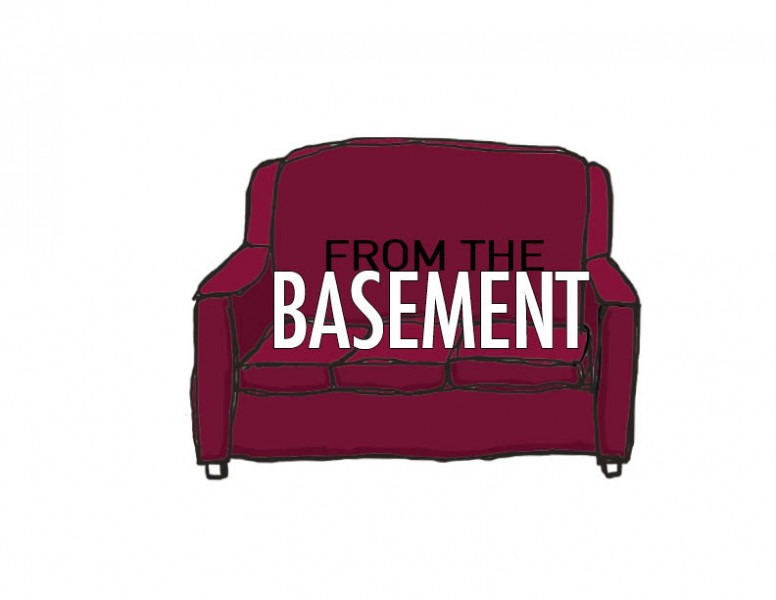From the Basement: Student-athletes deserve cut of NCAA earnings
More stories from Shea Dobson
“Student participation in intercollegiate athletics is an avocation, and student-athletes should be protected from exploitation by professional and commercial enterprises.” This quote was taken directly from Article 2.9 of the Constitution of the National Collegiate Athletic Association, better known as the NCAA.
According to Merriam-Webster, an avocation is “a subordinate occupation pursued in addition to one’s vocation especially for enjoyment.” By this definition, student-athletes are essentially hobbyists. Yet college athletics are a billion dollar industry, with the NCAA alone earning $871.6 million in 2011-2012. According to an official revenue breakdown provided by the NCAA, 81 percent of this money comes from “television and marketing rights,” meaning $705 million was generated solely off of media revenue. Most of this money goes back to the cable networks. A smaller, but still significant portion, goes to the NCAA and the rest goes to the colleges. Student-athletes get none.
Given that the NCAA profits so much off of college athletics, which they describe in their own constitution as a recreational hobby, I took it upon myself to investigate what the NCAA does to truly warrant those earnings, meaning, what exactly makes the NCAA necessary for the survival of college athletics. The NCAA does not provide student-athletes with scholarships. These are provided by the student-athlete’s respective university. The organization does not provide student-athletes with shares of revenue off of their television appearances or merchandise sales. The NCAA has stated in the past that it has no legal responsibility to ensure academic quality at its universities. With all of these things out of the running, what service could the NCAA actually provide to its student-athletes?
On its own website, the NCAA states that it was created in 1906 “to protect young people from the dangerous and exploitative athletic practices of the time.” Keep in mind that in 1906, college sports were not nearly as prevalent or important as they are today, and therefore student-athletes were not going to receive any “impermissible benefits” because there was no money in their industry. A lot of things have changed since 1906, and among these changes has been the emergence of college sports from an “avocation” to which few people paid any heed, to an industry that makes billions of dollars for colleges, advertisers and the NCAA. The principles the NCAA was founded on are outdated and do not fit the modern sports climate, and people are beginning to realize this.
If the NCAA wishes to survive, it must adapt its practices, and this starts by giving student-athletes what is due to them by allowing them to receive a percentage of their own merchandising revenues. Big name players raise millions of dollars in jersey sales and get none of it because the NCAA owns their likeness. The organization’s ownership policies led to former Ohio State quarterback Terrelle Pryor’s five-game suspension from the NFL in 2010 when it was discovered that he and several other Ohio State football players sold signed merchandise to a tattoo parlor owner. Pryor, who had declared for the NFL supplemental draft, had to sit out the first five games of his professional career, and Ohio State coach Jim Tressel lost his job over the incident.
While the NCAA made over $37 million off of the sales of Johnny Manziel’s jerseys in 2015, Manziel, and players like him, are entitled to none of the money from the sales, despite how much they make for their universities and the NCAA. Over the past few years people have become more and more angry over this fact. In recent years, the NCAA has been forced to cease production of its extremely popular NCAA Football video game because former players sued for the use of their likeness without their permission. Public opinion is shifting rapidly, with 40 percent of Americans in favor of paying college athletes beyond their scholarships in 2017, an increase of 11 percentage points from 2014. The NCAA has profited off of amateurism for a century, but the public is beginning to wise up, and it is about time the NCAA does the same.
Your donation will support the student journalists of Tulane University. Your contribution will allow us to purchase equipment and cover our annual website hosting costs.




Bill cosgrove • Jun 11, 2017 at 10:33 pm
I totally agree! Amateur athletics used to have a warm fuzziness about it. Kind of romaticizm. But, you’re right the climate has changed. Kids are being forced to forego 4 years of college, declaring early for the pro- draft. Compensation for the profit made on young talent is overdue!